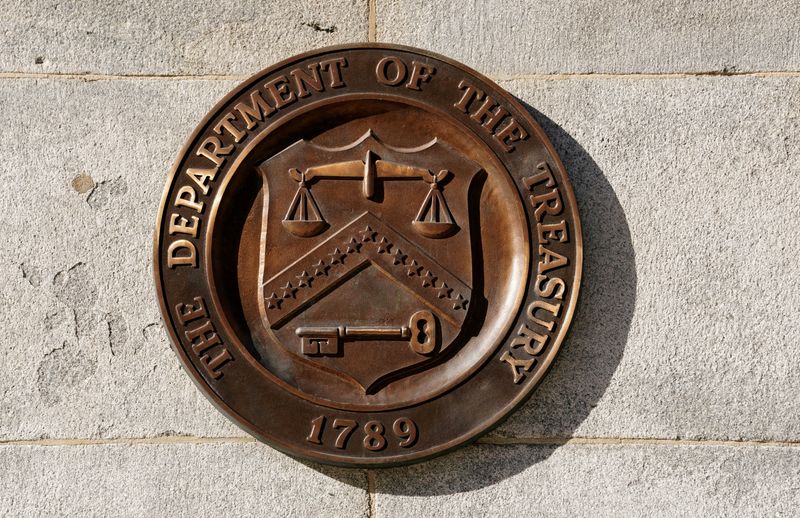
© Reuters. A bronze seal for the Department of the Treasury is shown at the U.S. Treasury building in Washington, U.S., January 20, 2023.? REUTERS/Kevin Lamarque/File Photo
By David Lawder
WASHINGTON (Reuters) -The U.S. federal budget deficit fell sharply in January to $22 billion as receipts hit a record for that month, partly because tax refunds fell after the Internal Revenue Service (IRS) cleared a backlog of pandemic-delayed tax returns, the Treasury Department said on Monday.
The deficit last month was $17 billion, or 43%, less than the $39 billion deficit in January 2023. Outlays for the month grew 3% to $499 billion, while receipts jumped 7% to $477 billion.
This January’s comparison with a year ago was also significantly helped by the $36 billion bailout of a Teamsters union pension fund in January 2023, as no similar large one-time outlays were recorded this year.
For the first four months of the fiscal year, the deficit rose $72 billion, or 16%, to $532 billion as costs to service the national debt rose, as did outlays for Social Security, Medicare and military programs.
The Treasury said both receipts and outlays were records for the period, with receipts up $112 billion, or 8%, to $1.585 trillion, and outlays up $184 billion, or 10%, to $2.117 trillion.
Individual tax refunds, which are deducted from receipts, were $15 billion lower in January than during January 2023. The IRS last year adopted new scanning technology to enable it to process paper returns more quickly. Individual withheld receipts in January, benefiting from strong employment trends, were up $20 billion, or 7%, from a year earlier.
But the Treasury’s interest cost on the public debt grew $18 billion, or 35%, in January compared to a year earlier due to a higher weighted average interest rate now at 3.15%, as well as higher debt levels. For the fiscal year to date, debt interest costs were up $96 billion, or 37%, to $357 billion, outpacing outlays for Medicare.
Year-to-date costs for Medicare, the healthcare program for seniors and the disabled, rose $23 billion, or 8%, to $306 billion, due to higher payments for Medicare Advantage plans. The Social Security pension system recorded a year-to-date cost increase of $46 billion, or 10%, to $487 billion as the result of cost-of-living increases of paid benefits and a higher number of recipients as members of the baby boomer generation retire.
The Treasury also reported higher costs for military programs due to expenditures for military personnel operations and maintenance. For the first four months of fiscal 2024, these were up $32 billion, or 13%, to $283 billion.
Source: Investing.com



























